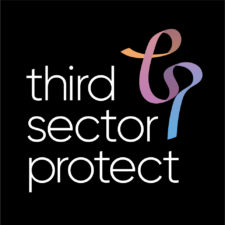
How to manage volunteer risks
The volunteer sector is working in a radically different climate from a decade or so ago, which has made risk management a subject that all organisations need to consider. Managing volunteer risks is an essential part of running a charity and can ensure that your operations aren’t affected if an unexpected incident were to happen.
Risks associated with volunteers
When identifying the risks associated with your volunteers, it might help to ask questions such as:
– Have volunteers’ roles changed, increasing the risks?
– Have you had any incidents that highlighted possible risks?
– Is your charity’s work subject to a new regulatory framework or legislation?
The National Council for Voluntary Organisations considers possible risks, which include:
– Sub-standard performance by volunteers, resulting in harm to clients, users, participants or the public.
– Client or volunteer abuse (physical, emotional or financial).
– Misleading or wrong advice and information given to clients or the public.
– Loss or damage to property.
Next, these identified risks need to be assessed. Assessing requires analysing or estimating the chances of something happening and the likely impact if it does. Some risks are relatively minor, but it’s important to bear in mind that anything involving negligence on the part of the volunteer also implicates the charity to an extent. Abuse is a topic high on today’s news agenda, and if a volunteer was alleged to have abused a service user (regardless of whether they did it or not) it could lead to a full-blown PR disaster for your charity. Stricter risk-management protocols should be put in place for these high-risk areas.
Volunteer agreements
Once these volunteer risks have been assessed and analysed, it is then a matter of controlling them. A ‘volunteer agreement’ can be very helpful for defining boundaries and expectations – setting guidelines and parameters, but without implying any ‘contractual obligations’. A signed and dated document record will help to defend your position in the event a volunteer is injured in activity outside their agreement.
Controlling risk through role changes
Managing volunteer risks can also involve looking at the volunteer’s role and making adequate changes, such as allowing volunteers to work in pairs or teams to provide support. Other changes, such as moving a volunteer who has difficulty carrying out a certain role to a different one, or changing the location of an activity run by a volunteer, can also be effective control methods.
Insuring volunteers
Charities are often unsure whether they have to insure volunteers. Legally speaking, your charity doesn’t have to, but it is a huge risk not to do so. If a service user (or the volunteer themselves) brings a claim against your charity, it could cost thousands to defend. Public liability insurance would, in most instances, cover the costs of defending your charity against allegations of injury or illness caused to a service user by a volunteer, however injuries to volunteers are often excluded under Public Liability and that is why it is important to check that volunteers are covered under the Employers Liability section of cover as this does not come as standard.
ThirdSectorProtect
Get set up with the insurance professionals at Third Sector Protect for tailored and independent insurance advice. For additional information on managing volunteers, read our blog post: How to recruit and manage volunteers in your organisation.
For more tips and tricks on all things third sector follow us on Facebook, Twitter & LinkedIn.
 |  |  |







